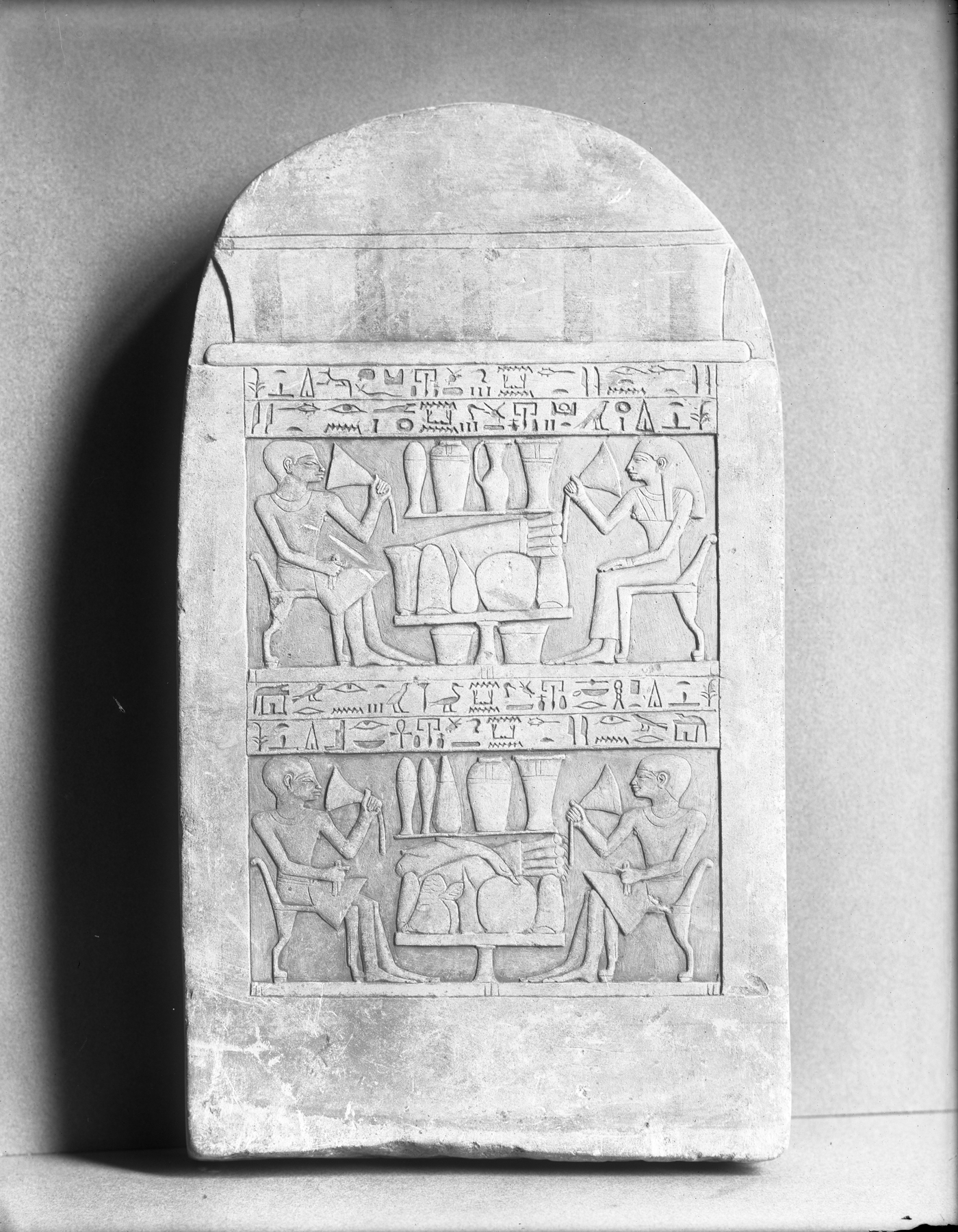Funerary Stela
(Ancient Egypt and Nubia )
This stela, or tombstone, commemorates four people. Each is shown seated in a high-backed chair, the feet of which resemble animal legs. Between the pairs are offering tables heaped with food. Jars of liquid offerings are shown above the tables, but they are meant to be interpreted as being behind or next to the tables.
Four lines of hieroglyphic text identify the stela's owners and request offerings on their behalf. The first line names the principal owner, a woman named Khety; the second, her brother Sobek-re; the third, a man named Sa-wedjat; and the fourth, his brother Khety. Khety was a "unisex" name in ancient Egypt and is borne by both the female owner and the third male owner. The two pairs were probably related, but the relationship is not stated. The costume and the architectural element at the top resemble Old Kingdom models.
Provenance
Provenance (from the French provenir, 'to come from/forth') is the chronology of the ownership, custody, or location of a historical object. Learn more about provenance at the Walters.
Henry Walters, Baltimore [date and mode of acquisition unknown]; Walters Art Museum, 1931, by bequest.
Conservation
| Date | Description | Narrative |
|---|---|---|
| 9/8/1960 | Treatment | cleaned |
| 9/27/1965 | Treatment | cleaned |
| 8/31/1998 | Examination | survey |
Geographies
Egypt (Place of Origin)
Measurements
19 1/2 x 11 x 2 3/8 in. (49.5 x 28 x 6 cm)
Credit Line
Acquired by Henry Walters
Location in Museum
Accession Number
In libraries, galleries, museums, and archives, an accession number is a unique identifier assigned to each object in the collection.
In libraries, galleries, museums, and archives, an accession number is a unique identifier assigned to each object in the collection.
22.125


